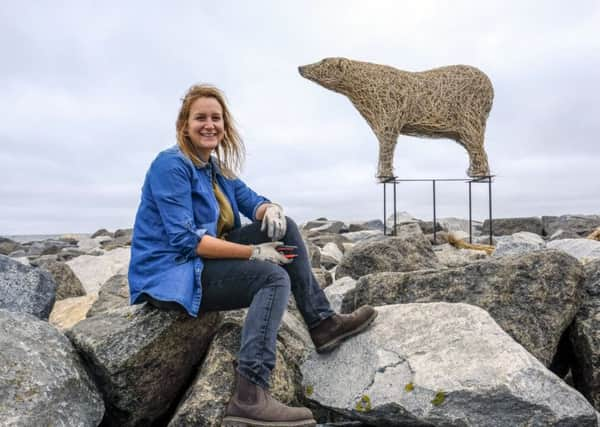Polar bear greets visitors as art festival begins in Yorkshire fishing village


A polar bear, fashioned from stripped and woven white willow around a central steel armature by the local artist Emma Stothard, has been installed overlooking the Harbour, and will remain there through September.
Ms Stothard, whose galvanised steel wire sculpture of a 19th century Craven Heifer, the largest cow ever exhibited in England, was a highlight at this summer’s Great Yorkshire Show, said she had produced the new work in celebration of the 250th anniversary of Captain Cook’s first voyage of discovery.
Advertisement
Hide AdAdvertisement
Hide AdCook, whose early life was spent in Staithes, did not encounter a polar bear – he was killed in Hawaii in 1779 – but his successor, Capt Charles Clerke, did so, five months later.
A second local seaman, William Scoresby Sr, master whaler and inventor of the barrel crow’s nest, brought a polar bear cub home from one of his Arctic voyages in the early 1800s.
Ms Stothard said: “Living in Whitby, I’ve long been familiar with the stories of Captains Cook and Scoresby, and I wanted to sculpt a polar bear. This seemed the perfect year to do it.”
Her previous artworks for the weekend-long festival have included giant lobsters and a life-size family of elephants.
Advertisement
Hide AdAdvertisement
Hide AdThe Staithes event, for which shops, houses and other available spaces are turned into pop-up art galleries, was inspired by a festival in east Scotland, and has grown into one of the biggest of its kind.
Some 7,000 people are expected to descend on the picturesque fishing village today and tomorrow.
In the late 19th century, it was home to two dozen painters who took their inspiration from the impressionists and called themselves the Staithes Group.